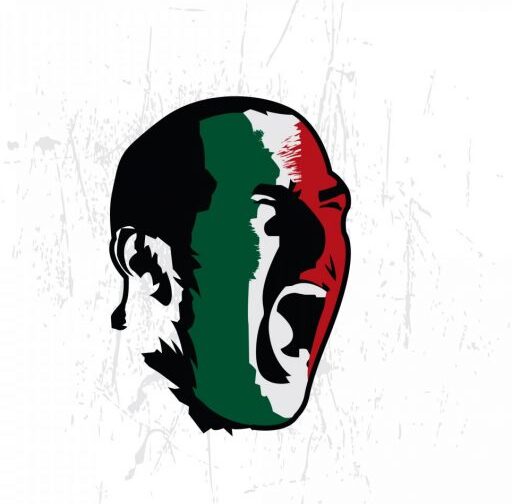Arrigo Sacchi’s squad selection for the 1994 World Cup was made a lot easier by the brilliance of many Italians in Serie A, with most of these playing for Milan, Juventus and Parma

At first sight, there was nothing unusual about 1993-94; everything was expected to carry along the same lines, Juventus challenging AC Milan for the Scudetto and the lesser names struggling to survive.
In a way, that was exactly what came to pass, yet that season proved a landmark in many ways – something of a bridge between the football of the past and that of the future.
For the Rossoneri themselves, the summer brought change. Out had gone Ruud Gullit, Marco van Basten, Alberigo Evani and Frank Rijkaard, while their replacements looked set to be Brian Laudrup, Florin Radicioiu and – later – Marcel Desailly.
They started well, with Croatian Zvonimir Boban, not much more than a bit part player previously, lashed a spectacular winner in a 1-0 triumph over Lecce. That game was an echo of what was to come.
Fabio Cappello, without evidence before the season to rely on his attack, focused his side on their defensive element. In truth, with the likes of Franco Baresi, Alessandro Costacurta and Paolo Maldini, it was always going to be a strong suit.

By contrast, although the name of Laudrup was well established, Radicioiu was something of an unknown quantity and veteran Daniele Massaro had only scored 10 goals once in his four seasons with the club to date.
Their first real challenge was set for October, with Juventus set to visit the Stadio Giuseppe Meazza. The Bianconeri were beginning to come into their own, with Roberto Baggio at his best and Antonio Conte impressing in midfield. Conte was called into the Italy squad in May 1994 for his debut, and didn’t look back from there. Alessandro Del Piero was waiting in the wings, but had not yet established his importance.
Their defence was equally strong, with 1990 World Cup Winner Jurgen Kohler marshalling a group that contained Moreno Torricelli and highly rated Andrea Fortunato.
Baggio stamped his name on the meeting first, earning a penalty after being bundled over by Baresi. He slotted the spot kick home himself, only for an unmarked Demetrio Albertini to head home an equaliser. That Sebastiano Rossi was not awarded a mark for his performance by La Stampa rather illustrated the Rossoneri’s dominance.

The dropped point allowed Parma to join Milan at the top of the table. The Ducali were themselves a fixture in the upper part of the table, and with the likes of Antonio Benarrivo in their backline could more than hold their own.
Like Juventus, they had a masterful forward player and Gianfranco Zola could be an utter delight; witness his free kicks in the wins over Juventus or Sampdoria or any of the beautifully slotted efforts into the corners of goals around Italy that gifted Parma other wins. He even scored a couple of headers, notably at Cagliari at the end of the season.
Yet the diminutive Sardinian’s 18 goals paled in comparison with the season’s Capocannoniere. For the second year in a row Lazio’s Giuseppe Signori led that chart. His 23 goals were a step down from the previous campaign. His strike partner netted just four times, but Pierluigi Casiraghi was beginning to demonstrate his worth with the space he created and his play off the ball.
It was that versatility that ensured Casiraghi was more valued at international level and while he did not play every game in Italy’s build up to the tournament in the summer of 1994, he was always more likely to be selected than rivals such as Andrea Silenzi, who grabbed a massive 17 goals during the season.

As one might expect, the Azzurri’s squad make-up that season was the traditional pre-tournament mixture of untested and established. Signori’s former club Foggia were still flying high under the influence of Zdenek Zeman, and creative midfielder Giovanni Stroppa was a large reason for that. He played four times for Italy this season, but did not make the squad for the finals.
Silenzi’s Granata team-mate Roberto Mussi enjoyed a different experience. His first appearance was in October 1993 and he made enough of an impact to earn his place in the squad for the United States. While Mussi went on to play an important role at the tournament, it is impossible to conclude that had Fortunato not been suffering from what was eventually diagnosed as leukaemia that he might have taken that spot. Fortunato was never to make another appearance and tragically passed away in April 1995 aged just 23.
There is always a name that comes up on the rails to a World Cup squad and there should be no surprise given their season that it came from Milan. Daniele Massaro’s campaign kept getting better and better, and by the time he scored a brace in the 4-0 European Cup final win, to add to the league triumph secured with just three defeats, he was a shoo-in for the squad.
In the end it was Juventus’ inability to win on the road that cost them the title – just three victories away from Turin and 11 draws saw Milan crowned champions in a season that saw a fine Italy side developed from a fine set of top clubs; when Arrigo Sacchi got to the USA, 15 of his 22 came from Milan, Juventus and Parma.


